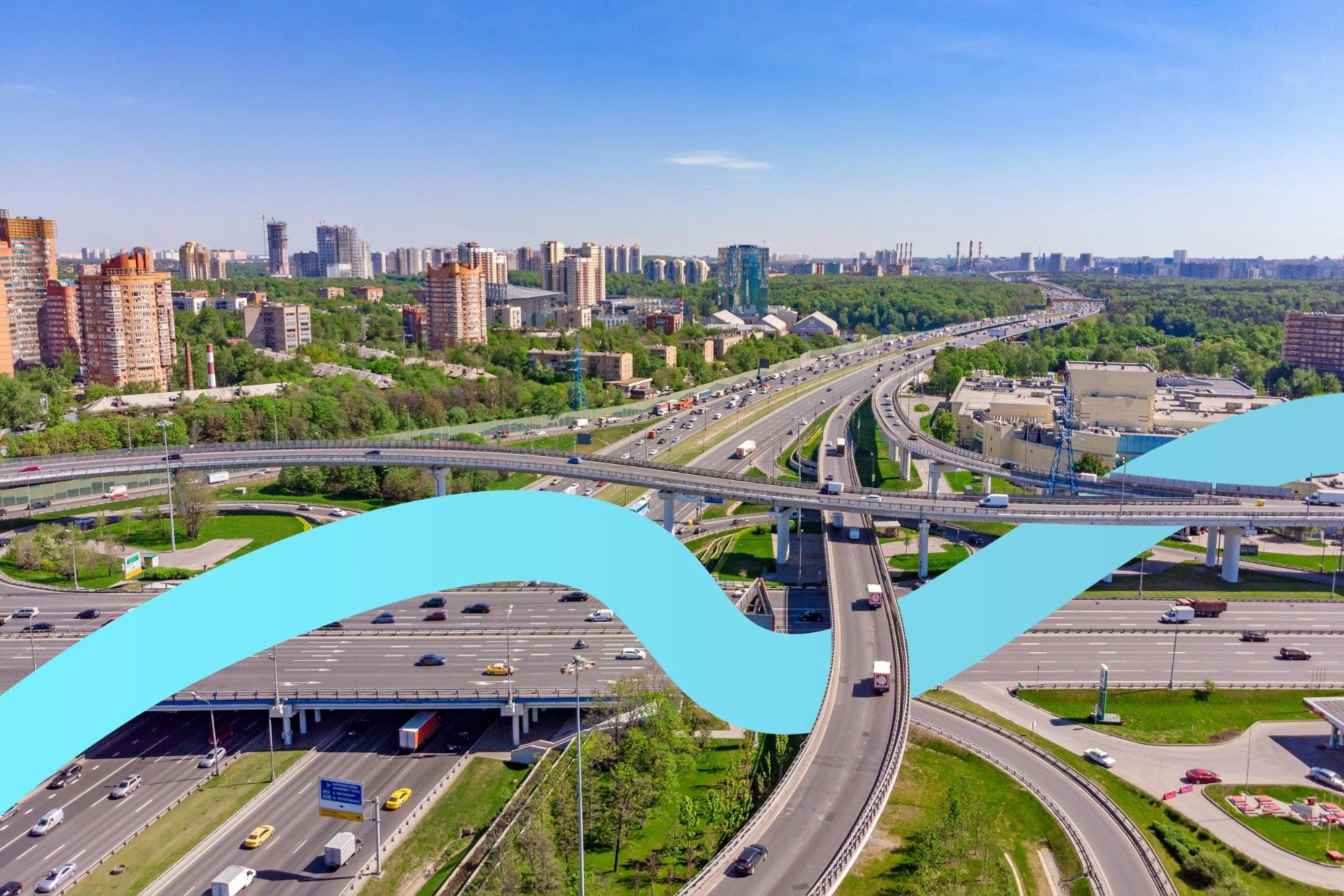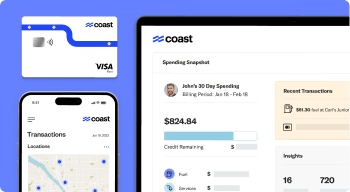For some business owners and managers, route optimization for fleet vehicles might seem unrealistic. This is largely because it depends on things that are outside of the company’s control.
After all, your fleet’s destination and schedules depend on the needs of your customers, and that means that customers are the ones who ultimately determine where your vehicles go and when — not you.
Whatever type of business you’re in, fleet route optimization is not only possible but vital for overall operational excellence. While you can’t control everything, the factors you can control can still yield big benefits for your business.
This post will cover why route optimization is so important and some of the fundamental considerations that factor into the process.
Table Of Contents
- Route Optimization Defined
- Benefits Of Route Optimization
- The Three Basic Route Optimization Strategies
- Route Optimization Factors
Route Optimization Defined

To get the job done — whether it’s transporting freight, dropping off a home delivery, making a service call, or something else — your company vehicles have to arrive at certain places at certain times.
However, there’s much more to route optimization than simply plotting a course from Point A to Point B and making an educated guess on how much time they’ll need to make the trip.
To better understand what’s involved in route optimization, think about how you navigate on a personal road trip to a destination you haven’t been to before.
Not that long ago, planning your trip might have meant seeing what roads linked your starting point and destination on a paper map. There could be problems if your atlas was out of date, and, of course, the atlas couldn’t account for things like delays caused by construction or accidents.
Today, navigation applications like Google Maps, Waze, and Apple Maps have improved on this method in every way. Not only can we find a route from A to B much quicker, but the application can also generate a new route on the fly to account for changing conditions, like traffic jams.
If you think of doing the same thing but for multiple vehicles with multiple destinations, which may constantly be changing, then you can begin to understand some of what goes into effective route optimization.
Unsurprisingly, most businesses now utilize software tools to handle route optimization instead of putting this burden on the fleet manager.
Still, understanding route optimization concepts will help you choose from the many competing options even if you’re not going to be poring over maps.
Benefits Of Route Optimization
Effective route optimization can bring a range of important benefits to your business. Some of them are more tangible and obvious; others are things you might not be as likely to think about.
Saving Time

When you used to plan a trip with the old road atlas, you probably picked the route that would get you to your destination the quickest. Likewise, you don’t want your company fleet vehicles spending any more time on the road than they absolutely have to.
There are only so many hours in a day. The more time a vehicle spends on any given trip, the more time goes by until it can be assigned to the next task. Reducing the amount of time spent on each trip means you can schedule more trips.
No business owner would want to buy two vehicles if they could get the same amount of work done with just one. Using route optimization to pick the most efficient routes for your fleet helps you get the most out of every vehicle.
Saving Money
You’ve probably heard the adage that “time is money,” and that’s certainly the case with route optimization. Inefficient routes lead to your fleet spending more time than necessary on the road, and the more time your vehicles spend on the road, the more it will cost your company.
Optimizing routes can mean a huge savings in fuel costs, 20-40% according to some sources. More miles traveled and more time with the engine running also lead to more wear and tear on your vehicles, so efficient routes can help you save on maintenance as well.
Customer Satisfaction

Of course, you can’t underestimate the value of getting your fleet vehicles where they’re supposed to be, on time, every time. There are a lot of strategies for attracting new customers, but consistency and reliability create repeat customers.
Route optimization can give you the confidence you’ll be able to keep your commitments to your customers, even when unexpected complications, like traffic jams, breakdowns, or employees calling in sick, arise.
Employee Satisfaction
Better employee morale might not be the most obvious benefit of route optimization, but it’s one that you shouldn’t dismiss. After all, nobody enjoys being stuck in traffic. And nobody enjoys making unnecessary trips or feeling that their time is being wasted.
Route optimization can help keep your employees happy, and happy employees are easier to keep.
The Three Basic Route Optimization Strategies
In analyzing route optimization, experts sometimes break the subject down into three different basic strategies. Choosing the correct one depends on the type of business you’re in and the particular characteristics of how your fleet operates to meet customer needs.
Static Routing
Static routing assumes that your destinations, loads, and timetables are just that: static, or at least only change rarely.
Under these conditions, companies can generally schedule their routes on an annual or semi-annual basis. If you had to, you could probably get away with actually planning these routes the “old-fashioned” way with a road atlas. However, most businesses don’t have this luxury.
Dynamic Routing
For businesses with more complications and variables in their fleet operations than just making routine deliveries to fulfill long-term contracts, dynamic routing offers much greater flexibility. But it’s also more complex.
In a dynamic routing system, fleet routes are typically determined on a daily — or even trip-by-trip — basis. Dynamic routing can include regularly scheduled trips, but with adjustments to route and timing based on current conditions up to the time of departure.
Real-Time Dynamic Routing
Real-time dynamic routing is the next step up in optimization complexity from dynamic routing and is most useful for businesses that receive new delivery or service calls throughout the day.
With real-time dynamic routing, new destinations are added to the routes of company vehicles already in the field based on proximity and expected job completion time.
By dispatching vehicles directly from one job to the next, real-time dynamic routing cuts down on response time for customers and prevents company vehicles from making unnecessary trips back to the company hub only to immediately be dispatched on another trip.
Route Optimization Factors
Effective route optimization is a matter of considering and balancing many different factors. Here are some of the most important.
Deadlines

If your fleet can’t reach their destinations in time to satisfy customer needs, nothing else really matters. Good route optimization starts with accurate scheduling and properly setting customer expectations.
Driver Proximity
Generally speaking, if a call comes in requiring you to send a vehicle to a new destination, you’ll want to use the driver who’s already closest. However, this requires having an accurate up-to-the-minute picture of where all of your vehicles are while they’re away from the hub.
Fuel

Of course, all things being equal, you’d prefer that your fleet vehicles take paths to their destinations that are more fuel-efficient.
Another layer to the fuel efficiency puzzle is considering what happens if a fleet vehicle needs to refuel on the way to its next destination. Fleet gas cards can help. But if your card doesn’t use an open loop merchant network, drivers might have to go out of their way to fill up.
Number Of Stops
Ideally, every trip should check multiple items off of your fleet’s “to-do” list. But customer needs may mean this doesn’t always happen. Still, if at all possible, you want to avoid vehicles making trips to destinations far from the hub without making other deliveries or calls along the way.
Traffic
Route optimization would be an entirely different ball game if your fleet was the only one with vehicles on the road. Of course, it’s not, and that means route optimization must reckon with traffic.
Good route optimization will minimize delays by diverting drivers around the worst congestion.
Number And Direction Of Turns
The shortest route between two points is always “as the crow flies” — a straight line. Your fleet probably can’t fly, but the principle still applies.
Taking into account the number and direction of turns is still an important part of route optimization. In fact, UPS plans their delivery routes to minimize left turns because left turns statistically take longer and lead to more accidents.
Let Coast Help Optimize Your Fleet Operations

The Coast fleet and fuel card gives you an advantage in one of the most important aspects of route optimization by helping you save on efficiently filling up your fleet.
Coast’s Visa acceptance means your drivers can fill up on the way to their next job without going out of their way, and Coast’s detailed expense reporting helps you analyze your fleet operations to see where you can elevate your efficiency.
To learn more, visit CoastPay.com today.


